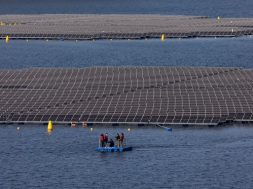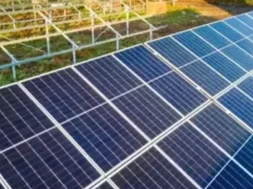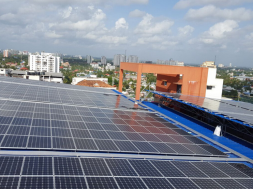
Coal-rich states in the country can take a cue from Odisha’s new renewable energy policy, which is geared to ensure a just energy transition for the state.
Odisha has been playing a central role in meeting the country’s growing energy needs. The state is the largest coal producer, producing about 185 million tonnes of non-coking coal in 2021-22. This is sufficient to fuel about a quarter of the country’s coal-based power generation. But it is also one of the most climate-vulnerable states, with extreme weather events like cyclones, heat waves, floods and droughts taking a significant toll on livelihoods and the economy every year.
To balance the imperatives of energy and climate change, the state government unveiled a new renewable energy (RE) policy. The Union government has committed to a net-zero target by 2070. This means that coal production and consumption would have to decline significantly over the next two to three decades, impacting the lives and livelihoods of coal-dependent communities. Therefore, states like Odisha must plan for the coming energy transition to safeguard the interests of vast numbers of people in its coal and industrial districts.
The state is among the country’s leading industrialising states, and a continuous increase in energy demand from all sectors is expected in the coming years. There is an apparent demand for RE from discoms and industries due to Renewable Purchase Obligations (RPOs). But the state currently accounts for just 0.55% of the country’s RE capacity (excluding hydropower) and imports renewable power to meet most of the existing RPO requirements. Without a rapid RE scale-up, RE imports will increase several times in the coming years as RPO targets reach closer to 45% by 2030.
It is highly dependent on the mining and metal sector for growth and jobs. Currently, 39.5% of Odisha’s gross value addition comes from the industry sector, the highest in the country. Moreover, the global mining and metal sector is transitioning to renewable energy and green hydrogen to reduce its carbon footprint and meet net-zero targets. Therefore, the state has an opportunity to become the hub of the green mining and metal sector by encouraging its industries to install captive RE plants.
Lastly, sectors like green hydrogen, green ammonia and energy storage are developing rapidly. Given the strong manufacturing base, the state has the opportunity to grow these green sectors to support the next phase of industrialisation, creating new employment opportunities as well as boosting economic activity and income.
But so far, the RE sector has not taken off in the state due to certain policy challenges and perceptions. For instance, there is a misconception that it has low solar and wind potential. This misconception has been created due to gaps in potential estimation, which the Odisha Renewable Energy Policy (OREP 2022) is addressing on an urgent basis. Policy challenges have also been addressed in the new policy.
Overall, a combination of factors has led to a scenario that it is cheaper for discoms and industries to buy renewable power from Gujarat and Rajasthan than to install RE projects within the state. Therefore, one of the aims of the new policy is to bridge the cost difference by providing best-in-class incentives to attract investors to develop the vast RE potential of the state.
The policy includes several exemptions on duties, charges and surcharges for 15-20 years duration, along with investment facilitation and single window clearances. In addition, several measures have been introduced to ease land allocation for RE project development, including priority allocation under the state’s land bank scheme, provisions for aggregation of private land, and exemptions from the land ceiling.
The policy pays special attention to certain high-potential technologies, such as pumped-storage hydro and small-hydro, for which the requirement of free power supply to the state has been waived for projects contributing to the state’s RPO. In addition, given the paucity of large wasteland tracts, the policy pays special attention to developing solar rooftops, floating solar, and distributed solar projects. Furthermore, wind power is proposed to be promoted through feed-in-tariff, and upcoming technologies like green hydrogen and ammonia are also being promoted through various incentives.
Meanwhile, economic diversification, and the need for skilled human resources for new and emerging sectors, would be vital to ensure a just transition of the coal districts of the region. The state’s new RE policy addresses this by including explicit measures for creating a skilled and semi-skilled workforce for the RE sector. Existing educational infrastructure in the state is planned to be upgraded to provide training on RE component manufacturing, installation, operations and maintenance. Most importantly, to maximise RE job creation, the green energy manufacturing sector has been included as a ‘thrust sector’ in the state’s new Industrial Policy Resolution (IPR), which aims to transform it into the the most preferred investment destination in India.
Overall, the state’s new RE policy and IPR will boost green investments in the state and decarbonise the energy sector. These policies will also support balanced RE growth in the country and help meet the nation’s RE and net zero targets. But, most importantly, they will help ensure a just energy transition in coal regions over the next decades.
Writers are respectively, principal secretary, department of energy, government of Odisha, and CEO, iFOREST
Views are personal and don’t necessarily reflect the views of the government of Odisha

















